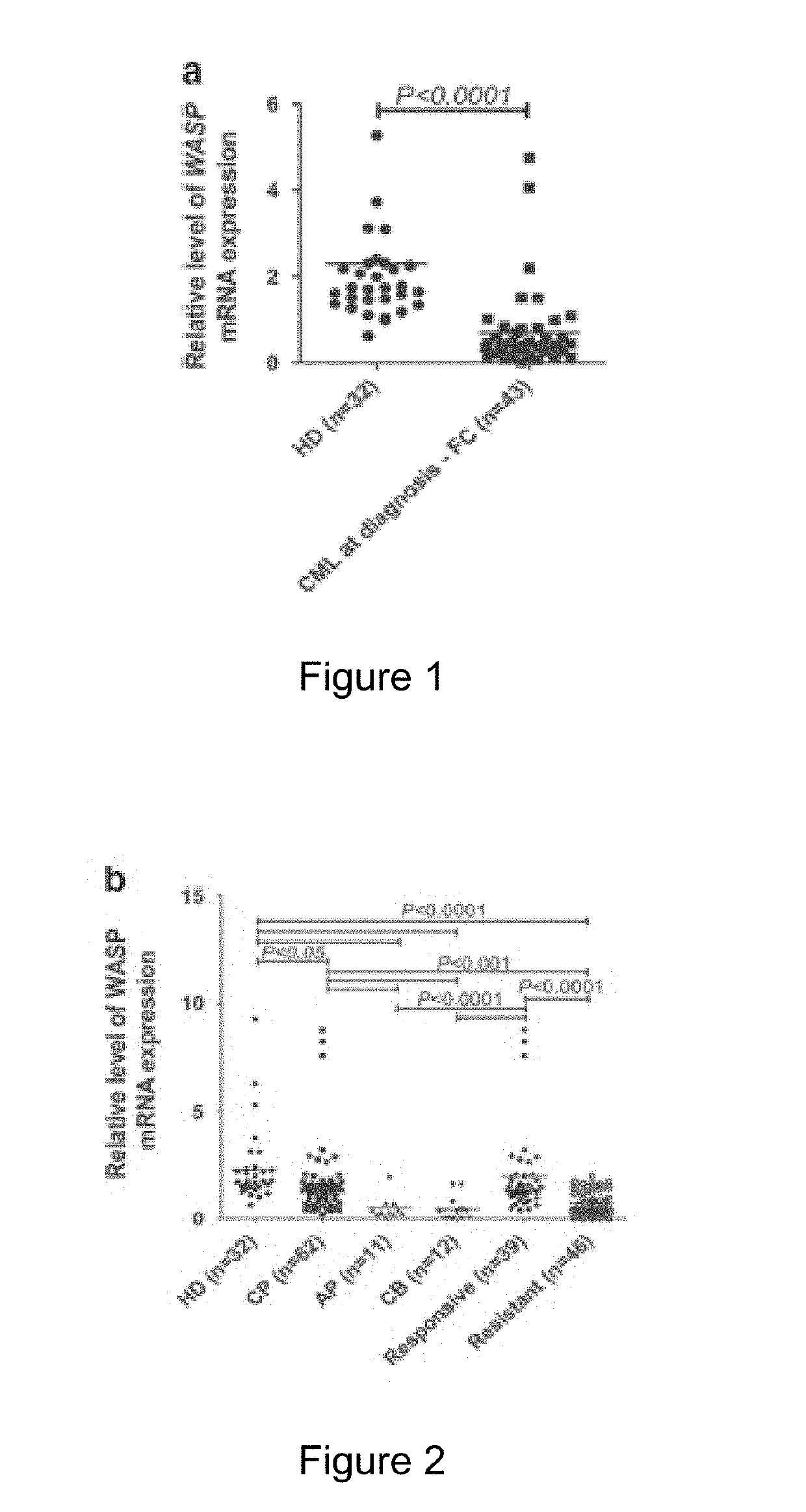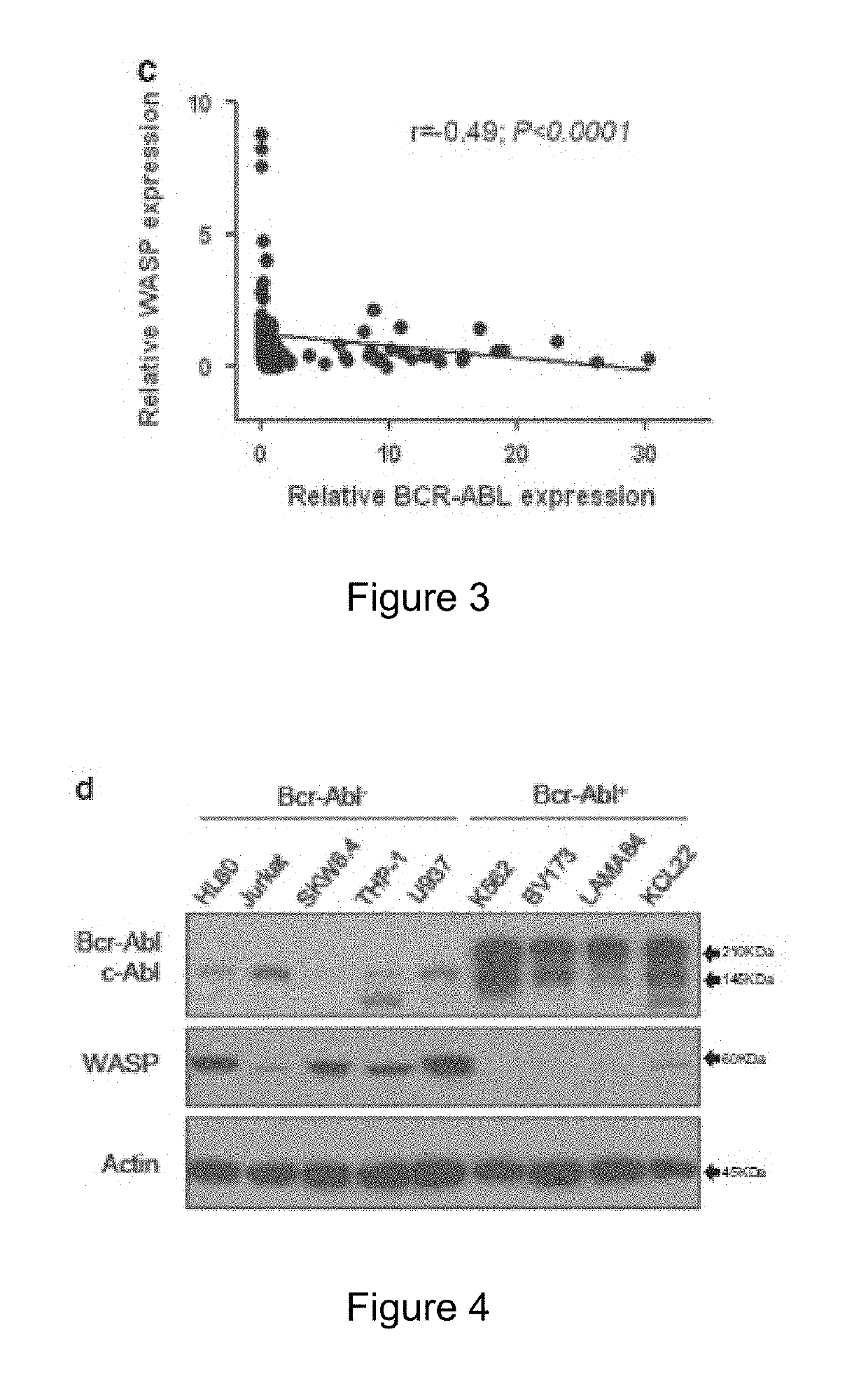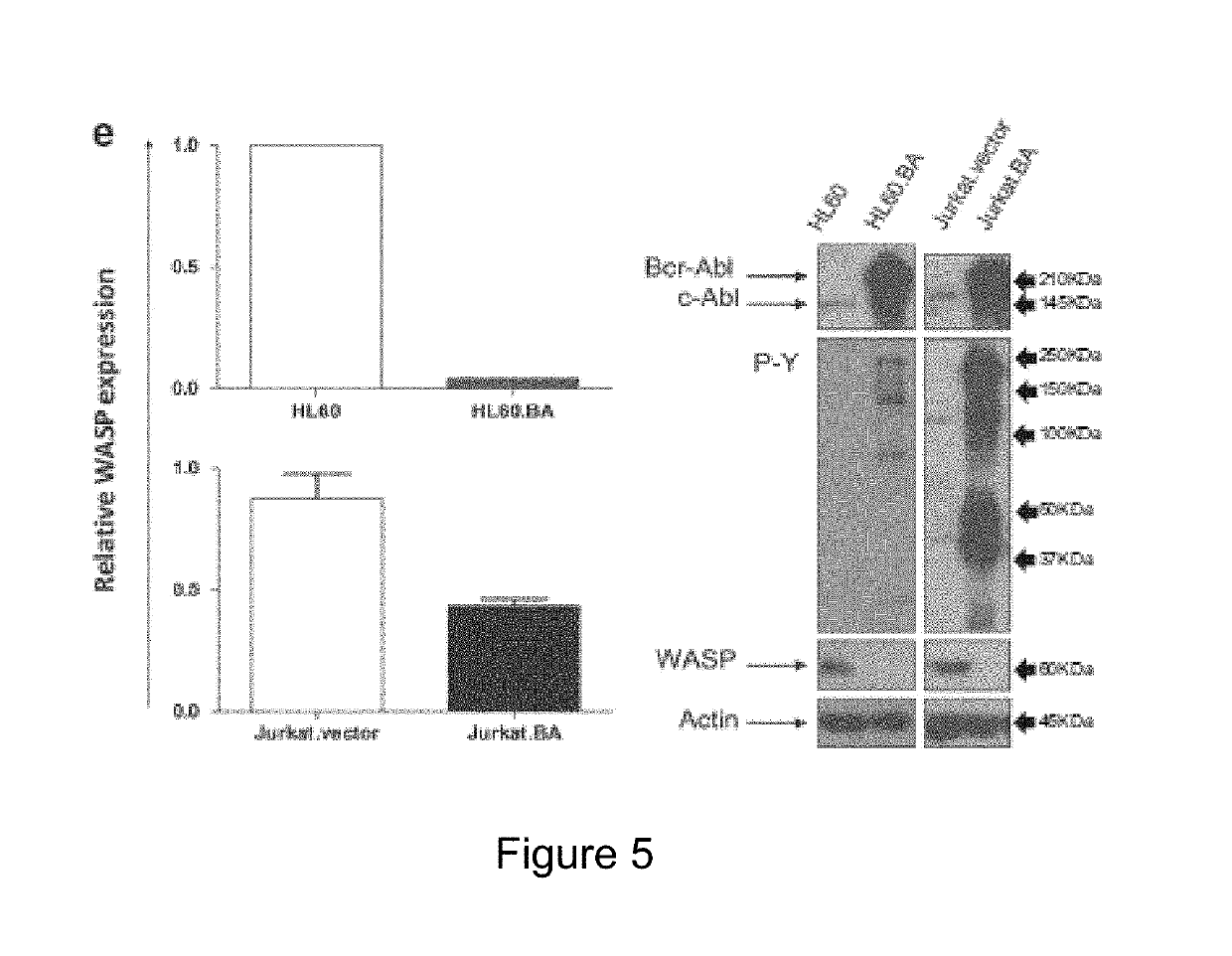Use Of Wiskott-Aldrich Syndrome Protein (WASP) As A Biological Marker And In Vitro Method For Monitoring The Progression Of A Hematological Disease
a technology of wiskott-aldrich syndrome and in vitro method, which is applied in the direction of material analysis, biochemistry apparatus and processes, instruments, etc., can solve the problems of reducing the effectiveness of patients, unable to monitor the progression of hematological diseases, and patients developing graft rejection reactions with varying degrees of severity, etc., to achieve fast decision making, improve survival rate, and improve the effect of survival
- Summary
- Abstract
- Description
- Claims
- Application Information
AI Technical Summary
Benefits of technology
Problems solved by technology
Method used
Image
Examples
example 1
Downregulation of WASP in CML Patients and BCR-ABL-Positive Cell Lines
[0056]Initially, the expression of WASP in CML patients and in BCR-ABL-positive cell lines was investigated. Thirty-two healthy individual and 85 CML patients (62 CP, 11 AP and 12 crisis blastic phase) were analyzed, from which 39 were responsive to TKIs therapy (imatinib or dasatinib) and 46 were resistant. Most of patients from responsive groups presented a major molecular response after dasatinib therapy.
[0057]CML diagnosis of the patients enrolled in this study was confirmed by the demonstration of Philadelphia chromosome in conventional cytogenetics and / or BCR-ABL detection by RT-PCR. Hematologic, cytogenetic and molecular responses were redefined according to the European LeukemiaNet 2013 recommendations.
[0058]Peripheral blood mononuclear cells from patients and controls were isolated according to standard protocol with the Ficoll-Hypaque 1077 density technique.
[0059]All cell lines K562, LAMA-84, KCL22, BV17...
example 2
Expression of WASP in PBMC from CML Patients in Advanced Phases and Overall Survival
[0066]Next, the biological relevance of decreased levels of WASP for CML patients was investigated. The probability of OS of 31 CML newly diagnosed patients according to WASP expression levels was calculated from CML diagnosis until death or last follow-up using the Kaplan-Meier method and the log-rank test, using IBM SPSS software, version 21 (IBM, Armonk, N.Y., USA). It was also calculated the OS of 23 CML patients in advanced phases (AP and BP) resistant to IM 400 mg daily according to WASP expression levels.
[0067]WASP gene expression analysis among healthy individuals and patients' different groups were performed by using the GraphPad Prism software version 7 (GraphPad Software Inc., La Jolla, Calif., USA).
[0068]The relationship between the levels of WASP with the overall survival (OS) of the 31 newly diagnosed CML patients and in 23 CML patients at accelerated phase (AP) and blast crisis (BC) wa...
example 3
Downregulation of WASP in AML Patients
[0070]Finally, a meta-analysis using blood samples from healthy donors (control) and AML patients was performed to evaluate whether the WASP expression was also decreased for such type of leukemia. Hence, it was found that AML patients expressed lower levels of WASP compared to healthy donors (FIG. 8).
PUM
| Property | Measurement | Unit |
|---|---|---|
| Northern blot | aaaaa | aaaaa |
| nucleic acid arrays | aaaaa | aaaaa |
| microscopy | aaaaa | aaaaa |
Abstract
Description
Claims
Application Information
 Login to View More
Login to View More - R&D
- Intellectual Property
- Life Sciences
- Materials
- Tech Scout
- Unparalleled Data Quality
- Higher Quality Content
- 60% Fewer Hallucinations
Browse by: Latest US Patents, China's latest patents, Technical Efficacy Thesaurus, Application Domain, Technology Topic, Popular Technical Reports.
© 2025 PatSnap. All rights reserved.Legal|Privacy policy|Modern Slavery Act Transparency Statement|Sitemap|About US| Contact US: help@patsnap.com



